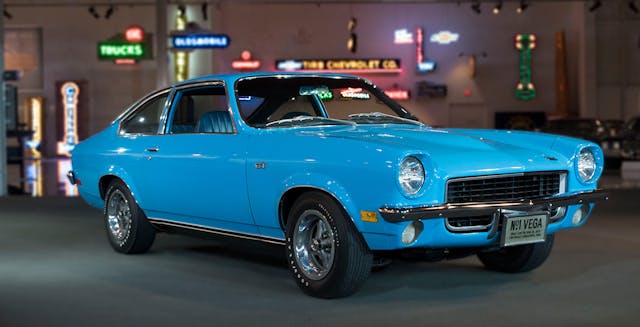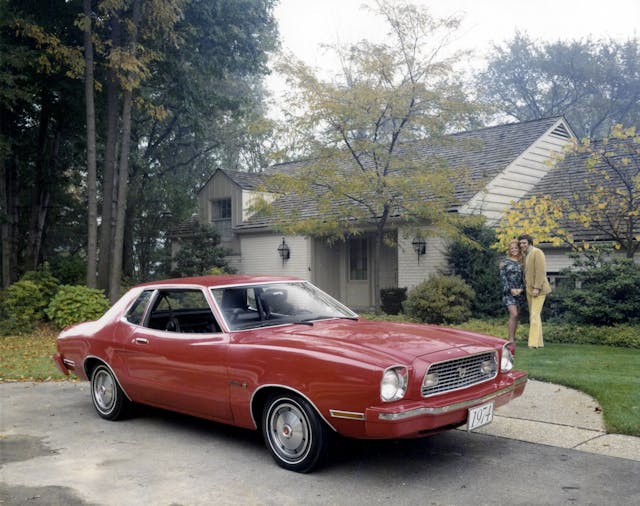Media | Articles
4 award-winning cars that made some buyers very, very angry
The longest running automotive award—Motor Trend’s Car of the Year—dates back more than six decades. Car and Driver’s 10Best now covers 40 years. A customer who bought the “COTY” every year without fail would have ended up with some truly great cars, like the ’68 GTO and the ’98 Corvette. (Someone who bought a “10Best” car every year could have wound up driving Accords their whole life.) In retrospect, however, it’s more than a little interesting to see how some of these MAJOR AWARD winners fared in the marketplace. Here’s a quartet of cars that thanked the Academy, cashed the checks, then… well, let’s see what happened next.
1971 Chevrolet Vega

Motor Trend Car of the Year
The 1971 Chevrolet Vega is perhaps the best example of a choice that looks much worse in hindsight than it actually was at the time—and a big part of that is due to the rose-tinted memories associated with the tail-end of the muscle car era. In a year where Mopars featured Hemis, Fords deployed Cobra Jets, and Chevrolet was still making the Chevelle SS, it might feel a little loopy to lavish praise on an inexpensive economy car that almost no one is collecting today.
To win Car of the Year, however, a model has to be either brand new or significantly refreshed. The first clue that the Vega was one of the few legitimate contenders that satisfied this criteria? Other new-for-’71 vehicles included the AMC Matador, Ford Pinto, and Pontiac Grand Safari station wagon. The R107 Mercedes-Benz SL had just become available in Europe, but wouldn’t start North American sales until 1972, and the DeTomaso Pantera (perhaps the Vega’s strongest competition) was offered as a 1971 model, but it wouldn’t be imported until the very end of the year.
More than being a late bloomer, however, the Pantera missed the boat on what Motor Trend thought was an important future trend: small, fuel-efficient automobiles that were still decent to drive and relatively easy on the eyes. The Vega was certainly a step up over the Pinto in this regard, and it even featured a forward-looking aluminum engine block.
Unfortunately, the Vega would eventually reveal itself to be a poorly assembled, questionably-engineered albatross (especially that alloy engine). Chevrolet would sell an enormous number of the car before it became clear that it couldn’t live up to its promise as a fun, affordable commuter, and it was replaced by the (also award-winning) Monza before the end of the decade. Motor Trend had fully bought in on the idea, but GM completely failed in its execution.
Marketplace
Buy and sell classics with confidence
1974 Ford Mustang II

Motor Trend Car of the Year
We remember the 1970s now for the back-to-back energy crises that would knock automakers reeling into the ropes. One by one, they tried to reverse their respective big-block courses and produce cars that wouldn’t be held prisoner by the mile-long line-ups at gas stations across the country.
It’s within this framework that the Ford Mustang II makes sense. The Mustang returned to the small-car roots that had originally defined it when it debuted 10 years beforehand, banishing thirsty V-8s in favor of a four-cylinder and six-cylinder line-up. A 302 V-8 would eventually become available, but it was largely an afterthought; this was a Mustang intended to appeal on price and thrift, with a modest dollop of style thrown in for good measure.
Americans couldn’t get enough of the Mustang II, and they bought hundreds of thousands updated pony cars almost immediately. It’s only today that some condemn the coupe’s awkward looks, Pinto-based platform, and non-existent performance as a complete and utter betrayal of “Mustang heritage.” If you had used that term back in 1974, you most likely would have received blank stares, or maybe the offer to purchase a used-up ’66 from someone tired of spending their entire paycheck on gas.
The Mustang II may have been bland to drive and uninspiring to look at by today’s standards, but it was exactly the car Ford needed at the time—and its Car of the Year status reflects that.
1980 Chevrolet Citation

Motor Trend Car of the Year
By the time the 1980 model year rolled around, Detroit was eager to put on a fresh face and forget all about the tumultuous decade that had just finished. It was clear that Japanese cars were on the verge of taking a big bite out of the mainstream via frugal fuel consumption and well-packaged technology, and GM decided it was time to go all-in with an advanced small car of its own.
Unfortunately, that car was the X-body, led by the Chevrolet Citation. It was the first in-house compact car from the General to feature a front-wheel-drive setup, and it was presented to both the media and the public as a technological marvel that would be able to compete with the best of the imports on their own terms.
What no one outside of GM knew was that the company had rushed absolutely everything about the X-body, dramatically shortening its development time in a bid to head-off Honda, Datsun, and Toyota. This would have a disastrous effect on the car’s overall quality, and within a few short years GM was facing down lawsuits about its braking systems, and dealing with endless complaints about its harsh drivetrain, failing transmissions, and fall-apart interiors.
So complete was the snow job that Chevrolet made sure that the media were provided with ringers for any and all testing, perfectly-assembled Citations that had been thoroughly massaged to remove any rough edges. It wasn’t only Motor Trend that fell for GM’s charm offensive—800,000 X-bodies were sold in its first year.
1983 AMC-Renault Alliance

10Best Car and Driver, Motor Trend Car of the Year
The AMC-Renault Alliance is perhaps the most puzzling member of this list, because it was a thoroughly ordinary car that won over almost every critic who ever drove it when it first hit the scene in 1983 (including Hagerty senior editor Jeff Peek, who was actually foolish enough to buy one). Not only did Motor Trend make it Car of the Year, but it also received 10Best recognition from rival publication Car and Driver, along with high praise in Popular Mechanics and Popular Science.
At its core, the Alliance was inoffensive and affordable basic transportation that made it to U.S. shores thanks to a last-minute loan agreement between AMC and Renault that extended a financial lifeline to the former in exchange for access to its dealer network by the latter. By the efficiency standards of the day the car was a home run, and as such it provided a “domestic” answer to Japan’s recent invaders (the car was assembled in Kenosha using AMC labor and a fair smattering of American parts).
There were few other auspicious automotive unveilings for 1983. Ford’s Thunderbird had the Turbo Coupe, while the new Porsche 944 had to compete in a separate Import category at Motor Trend (and was included on the same-year 10Best list by Road & Track).
It would take a few years before the impact of the Alliance’s poor build quality and stodgy reluctance to keep pace with the Japanese would come to light. By then it was too late. Chrysler’s 1987 purchase of AMC’s assets saw it inherit a slew of warranty claims and lemon lawsuits about the Alliance that would doom it to ignominy and an early death.
Place your bets
Which recent “COTY” winners will find favor with collectors, and which will be sent to the junkyards en masse? Chevrolet’s Volt and Bolt are both COTY honorees, as were the 2012 VW Passat, the 2018 Alfa Giulia, and the 2019 Genesis G70. You never know which one of them could go to Celebrity Rehab in the collector marketplace, though; 1991’s winner, the Mitsubishi 3000GT VR-4, spent decades as the “ugly duckling” among Japanese supercars before acquiring a devoted fanbase. And, of course, there’s always this year’s winner, the C8 Corvette. That might be a smart buy, too… if you can find one to buy!


We had a Passat, the version with the tiny turbo motor and an auto. We called it the pissed off squirrel. Slow, slow, slow… then really mad but still oddly kinda slow when the turbo kicked in. One of the fancy rear taillights developed a leak but held water to the halfway mark looking kinda like we were hauling around a small aquarium. The cat went bad while we owned it but it was still under warranty. Must have been a not fun job because the dealership tried every half-baked idea to not fix it (“spark plug gaps were off”) before they finally did and the check engine light then stayed off. There were other things. Not a favorite car
The Vega did not fail. 2 million were sold. The car was improved annually and in 1976 was upgraded including galvanized fenders and rocker panels and a 5 year/60,000 mile engine warranty